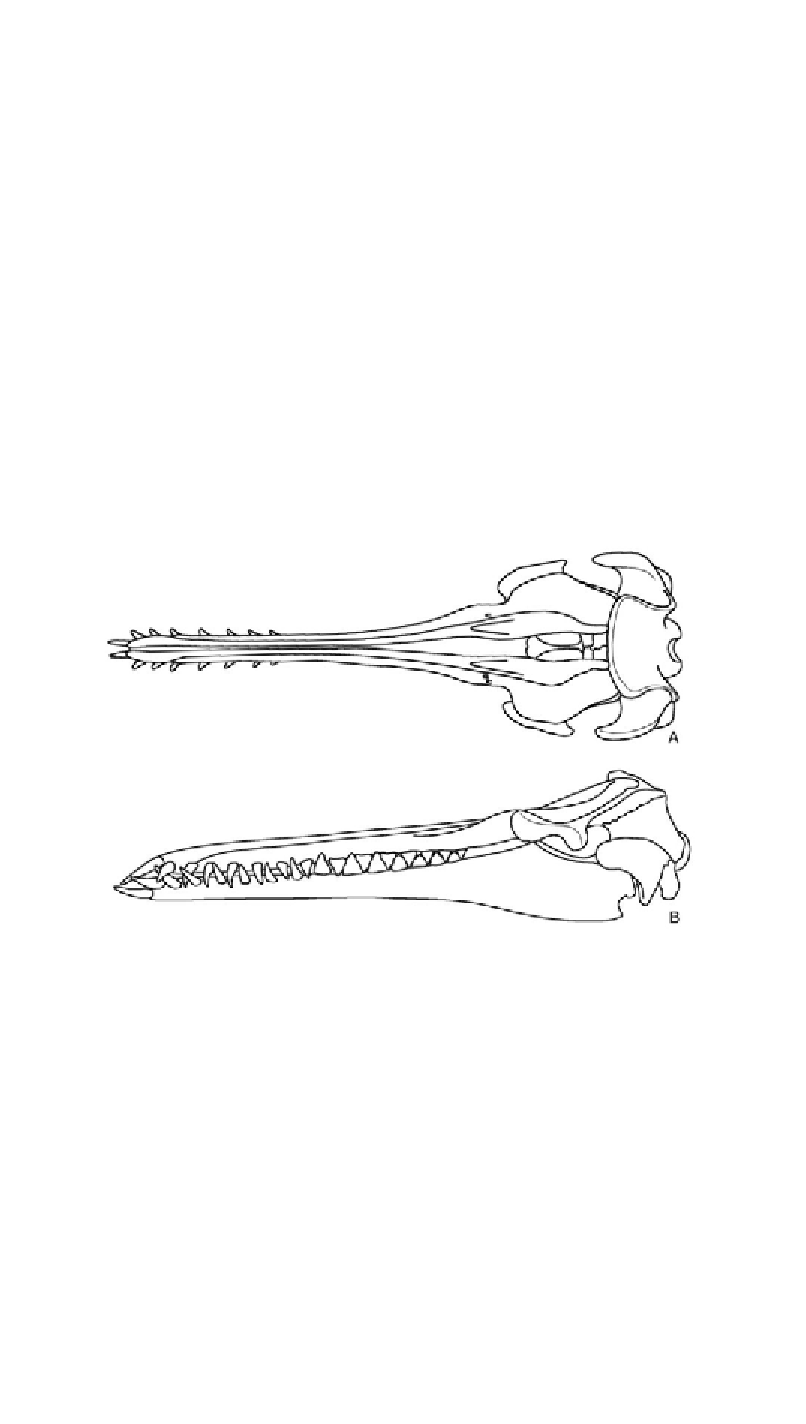Biology Reference
In-Depth Information
Family Squalodontidae
The extinct family Squalodontidae includes species of medium size to large size archaic
platanistoids that have among their primitive characters a symmetrical cranial vertex,
zygomatic process of squamosal not covered in dorsal view by the margin of the facial
surface, large cranial crests, stout rostra, unfused mandibular symphyses, heterodont
dentitions, large teeth, elongated incisors and canines, and multiple-rooted cheek teeth with
accessory cusps on their crowns. Their derived characters include posteriorly-positioned nares
and concomitantly anteroposteriorly short and blocky nasal bones, wide posterior ends of the
premaxilla, and a very deeply keeled posterior part of the rostrum (Dooley, 2005). Our
classification includes those genera and species that are the most universally accepted as
being squalodontids.
Squalodontids are known from all major ocean basins and their chronostratigraphic range
is from the later part of the Oligocene to the middle Miocene. Fordyce (2006:766) pointed out
that most reputed squalodontids from Australia and New Zealand do not belong to this
family, and this is reflected in our classification. Rothausen (1968) and Dubrovo and Sanders
(2000) regarded the Patriocetinae as a primitive subfamily of the Squalodontidae, with which
we concur. This group in the past has been interpreted as having other affinities, and as being
a separate family of Odontoceti.
Figure 4. Skulls of typical North Atlantic Platanistoidea of the family Squalodontidae, which are
sometimes called ―shark-toothed whales‖; A
,
Squalodon calvertensis
Kellogg, 1923, Middle Miocene
age, Maryland, U.S.A., dorsal view; B,
Squalodon bariensis
(Jourdan, 1861), Middle Miocene age,
France, left lateral view.
Squalodon
is the type genus of the family Squalodontidae; images modified
from Kellogg (1928: Figures 5 & 6); images are not to the same scale.
Among the more highly derived squalodontids, those members of the subfamily
Squalodontinae, are
Squalodon calvertensis
Kellogg, 1923 (Figure 4), of Middle Miocene age
from the Calvert Formation in Maryland, U. S. A. (and see Dooley, 2005). Squalodontids
have been reported from the South Atlantic (Cabrera, 1926) and from the North Pacific

Search WWH ::

Custom Search